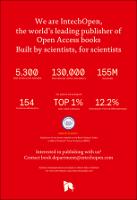Chapter Fabrication Methodologies of Biomimetic and Bioactive Scaffolds for Tissue Engineering Applications
| dc.contributor.author | Prakasam, Mythili | |
| dc.contributor.author | Mioara Piticescu, Roxana | |
| dc.contributor.author | Popescu, Madalina | |
| dc.date.accessioned | 2021-06-02T10:08:39Z | |
| dc.date.available | 2021-06-02T10:08:39Z | |
| dc.date.issued | 2017 | |
| dc.identifier | ONIX_20210602_10.5772/intechopen.70707_300 | |
| dc.identifier.uri | https://library.oapen.org/handle/20.500.12657/49186 | |
| dc.description.abstract | Tissue engineering has offered wide technologies for developing functional biomaterials substitutes for repair and regeneration of damaged tissue and organs. Biomimetic materials with their inherent nature to mimic natural materials are possible through the recent advances in the fabrication technology. With the help of porous or dense implants made with biodegradable materials, it is possible to incorporate different vital growth factors, genes, drugs, stem cells and proteins. In this review, we presented various fabrication methodologies of biomimetic and bioactive scaffolds for tissue engineering applications. An overview of the nanocomposites of biomaterials is presented. Further an example of one of the hybrid nanocomposite material is given for additive manufacturing. | |
| dc.language | English | |
| dc.subject.classification | bic Book Industry Communication::M Medicine::MQ Nursing & ancillary services::MQW Biomedical engineering | |
| dc.subject.other | biomimetic scaffolds, bioactive ceramics, fabrication technology, tissue engineering, 3D printing | |
| dc.title | Chapter Fabrication Methodologies of Biomimetic and Bioactive Scaffolds for Tissue Engineering Applications | |
| dc.type | chapter | |
| oapen.identifier.doi | 10.5772/intechopen.70707 | |
| oapen.relation.isPublishedBy | 09f6769d-48ed-467d-b150-4cf2680656a1 | |
| oapen.relation.isFundedBy | H2020-TWINN-2015 | |
| oapen.grant.number | 692216 | |
| oapen.grant.acronym | SUPERMAT |

